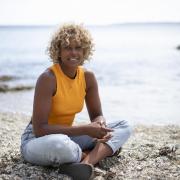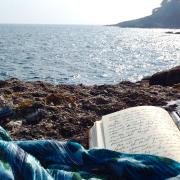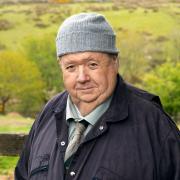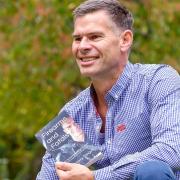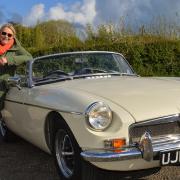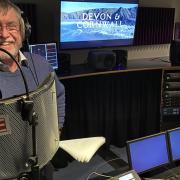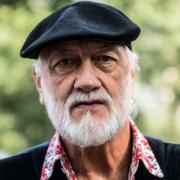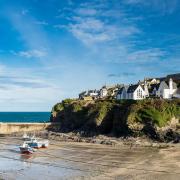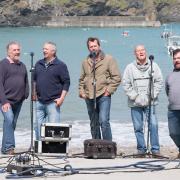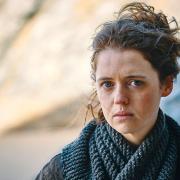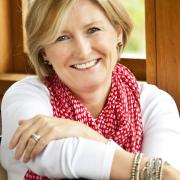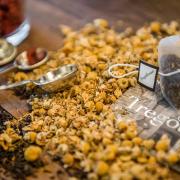Television presenter and eco-warrior Dick Strawbridge tells Cornwall Life about his search for the �€�good life' and how it brought him to the county he now considers home
In 2003 I embarked on my third career as a television presenter, having previously been an army officer and then a troubleshooter in industry. Working in television gives you time when you are between jobs (ie unemployed), so the family decided my time could be best used if we had more land/outbuildings. A year later we made a decision to move from our comfy home in Worcestershire, so we started our search for a smallholding. We had no idea the journey would take us to Cornwall. The family decision to move to the ‘good life’ was as a result of a lifetime of growing vegetables, foraging and keeping chickens at every house we lived in, including some seriously unsuitable rented and military accommodation. Finding a smallholding is challenging, especially if you have a specific checklist that has to be met to ensure you get your dream property. Surprisingly, it was relatively easy to meet most of our accommodation and land needs. However, we didn’t want a property in the middle of nowhere, we wanted to be part of a community, which is code for being within walking distance of a pub, having neighbours and broadband and mobile phone coverage. In fact, we wanted all the trappings of a 21st-century lifestyle. To be completely honest, we would have loved to have found the perfect smallholding a couple of hundred metres from our last home but, after a year of searching, we finally found exactly what we were looking for 200 miles away, in Tywardreath, here in Cornwall. Newhouse Farm is less than a mile from the sea at Par Sands and a short walk to Polkerris, with its lovely harbour. We are at the edge of a ‘real’ village. There are not many villages left anywhere in the country that have still got shops, businesses and a proper feeling of community. It says a lot that our local pub, the New Inn, has as many customers in winter as it does in the holiday season.
The BBC followed our move to Newhouse Farm, and our attempts to live with less impact on the planet, in the series It’s Not Easy Being Green. Our ‘idyllic’ farmhouse had an outside tap for running water and no electricity or plumbing connected and, to top it all, most of the roof had to be replaced. That was five years ago. Now we have a rather comfortable, rather large farmhouse that is heated by woodburners, is highly insulated and has energy supplied from wind turbines, a waterwheel and solar Photo Voltaics (PV); water comes from our spring, hot water from a solar thermal system, there’s a compost loo and an abundance of gorgeous organic produce from our geodesic dome and greenhouse. We rear pigs, chickens, ducks and geese, grow vines, fruit and nut trees, plus some very busy bees.The well-known mantra of those trying to be green, ‘Reduce, Re-use, Recycle’, has made consumers aware about not wasting energy, food and materials. A tip I would give is to have a look at your bills and work out how you can reduce them. The big problem is understanding what the best options are and the three series of It’s Not Easy Being Green have generated thousands of e-mails from people trying to navigate their way through the minefield of deciding what renewable energy systems to buy, or how to be greener. Our research and experience has been built up over years; in fact, I was first inspired by John Seymour’s The Complete Book of Self-Sufficiency over 35 years ago. My son, James, and I were over the moon to be asked by Dorling Kindersley to write our book Practical Self Sufficiency – the Complete Guide to Sustainable Living as an update to Seymour’s classic. It has been a labour of love and we are really pleased with the result. James has been the driving force, nagging me and ensuring we meet every deadline. The book contains lots of artwork and ‘step-by-step’ photography to explain how to do things and James translated our thoughts into artwork for the illustrators. We soon discovered I was rubbish at modelling so James did most of it and became a very strict ‘art director’ when it was decided I couldn’t wriggle out of the photo shoot.Mealtimes at the farm are a little bit like Ready, Steady, Cook in that we have a look and see what ingredients are ready in the garden/fridge/larder and then produce meals with tasty Cornish ingredients. I was fortunate enough to be asked to get involved in the BBC TV’s Celebrity MasterChef programme this year and it allowed me indulge one of my passions – cooking. Competitive cooking in front of experts is nerve-wracking and it really helps you appreciate the pleasure of cooking in your kitchen at home with a glass of wine and good company, compared to the pressure of a commercial kitchen. That said, once you experience the adrenalin of a working kitchen you either run away or get hooked. I loved it and now, in addition to the courses we run on sustainable living, we have started running lunch and evening occasional dining events here at Newhouse Farm, showcasing Cornish and organic produce. ‘From Fork to Fork: Lunch with Dick Strawbridge’ is happening during September, October and a date in December, while ‘A Feast of Information: Join Dick Strawbridge for an Evening’ is happening in September and December. For further details visit the Dick Strawbridge website (see below). We are very fortunate to live within a couple of miles of a lovely restaurant, Austells in Carlyon Bay. Having eaten there regularly and having caught the bug from Masterchef, I decided to see if I could get more experience by working there. I started off as a kitchen porter and, now that I have washed enough dishes, Brett Camborne-Paynter, the chef, uses me as a sous chef. I try, whenever possible, to work in Cornwall, hence the courses and writing; however, one of the hardest things about being green is paying the mortgage, so I’m afraid I spend a lot of time working ‘up country’. I also spend a lot of time travelling, as Cornwall is still far enough away to make it special. We travel by train when possible (it’s great having a major rail link at Par less than a mile away) but sadly I also do a lot of driving. Having been away, there is something very special about coming back over the Tamar and knowing I’m nearly home.



